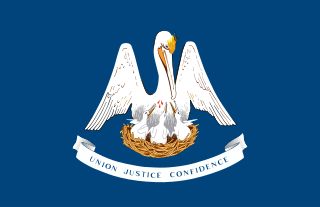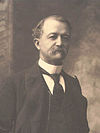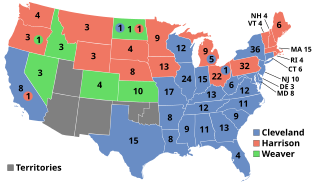
The United States presidential election of 1892 was the 27th quadrennial presidential election, held on Tuesday, November 8, 1892. In a re-match of the closely contested 1888 presidential election, former Democratic President Grover Cleveland defeated incumbent Republican President Benjamin Harrison. Cleveland's victory made him the first and to date only person in American history to be elected to a non-consecutive second presidential term. It was also the first of two times that an incumbent was defeated in two consecutive elections.

The United States presidential election of 1896 was the 28th quadrennial presidential election, held on Tuesday, November 3, 1896. Former Governor William McKinley, the Republican candidate, defeated Democrat William Jennings Bryan. The 1896 campaign, which took place during an economic depression known as the Panic of 1893, was a realigning election that ended the old Third Party System and began the Fourth Party System.

The United States presidential election of 1900 was the 29th quadrennial presidential election, held on Tuesday, November 6, 1900. In a re-match of the 1896 race, Republican President William McKinley defeated his Democratic challenger, William Jennings Bryan. McKinley's victory made him the first president to win consecutive re-election since Ulysses S. Grant had accomplished the same feat in 1872.

The United States presidential election of 1904 was the 30th quadrennial presidential election, held on Tuesday, November 8, 1904. Incumbent Republican President Theodore Roosevelt defeated the Democratic nominee, Alton B. Parker. Roosevelt's victory made him the first president to win a term in his own right after having ascended to the presidency upon the death of a predecessor.
The People's Party was a left-wing, agrarian political party in the United States. The Populist Party emerged in the early 1890s as an important force in the Southern United States and the Western United States, but the party collapsed after it nominated Democrat William Jennings Bryan in the 1896 United States presidential election. A rump faction of the party continued to operate into the first decade of the 20th century, but never matched the popularity of the party in the early 1890s.
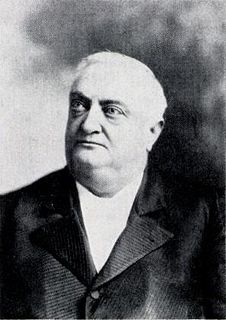
Daniel Lindsay Russell Jr. was the 49th Governor of North Carolina, serving from 1897 to 1901. An attorney, judge, and politician, he had also been elected as state representative and to the United States Congress, serving 1879-1881. Although he fought with the Confederacy during the Civil War, Russell and his father were both Unionists. After the war, Russell joined the Republican Party in North Carolina, which was an unusual affiliation for one of the planter class. In the postwar period he served as a state judge, as well as in the state and national legislatures.

Murphy James Foster was a Louisiana politician who served two terms as the 31st Governor of Louisiana from 1892 to 1900. Foster adopted the Louisiana Constitution of 1898, which effectively disfranchised the black majority, who comprised most of the Republicans, thus leading to Louisiana's becoming essentially a one-party (Democratic) state for several generations and excluding African Americans from the political system.
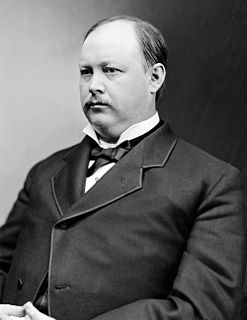
Elections to the United States House of Representatives were held in 1896 for members of the 55th Congress, coinciding with the election of President William McKinley.
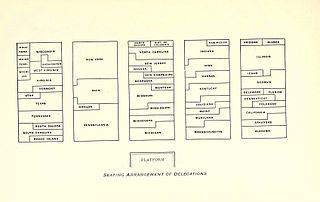
The 1896 Democratic National Convention, held at the Chicago Coliseum from July 7 to July 11, was the scene of William Jennings Bryan's nomination as the Democratic presidential candidate for the 1896 U.S. presidential election.
The Louisiana Democratic Party is the affiliate of the national Democratic Party of the United States in the state of Louisiana.
The Regular Democratic Organization (RDO), or Old Regulars, or the New Orleans Ring, is a conservative political organization based in New Orleans. It has existed for 130 years and as of 2017 is still active. The symbol of the RDO is the rooster. For many years the organization's headquarters was at the Choctaw Club.
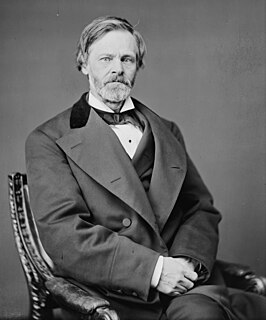
The United States Senate elections of 1896 and 1897 were elections in which the Democratic Party lost seven seats in the United States Senate, mostly to smaller third parties.

The 1896 United States presidential election in Montana took place on November 3, 1896. Voters chose three representatives, or electors to the Electoral College, who voted for president and vice president.

The Louisiana gubernatorial election of 1904 was held on April 19, 1904. Like most Southern states between Reconstruction and the civil rights era, Louisiana's Republican Party had virtually no electoral support. As Louisiana had not yet adopted party primaries, this meant that the Democratic Party convention nomination vote was the real contest over who would be governor. The election resulted in the election of Democrat Newton C. Blanchard as governor of Louisiana.

The Louisiana gubernatorial election of 1900 was held on April 17, 1900. Like most Southern states between Reconstruction and the civil rights era, Louisiana's Republican Party had virtually no electoral support. As Louisiana had not yet adopted party primaries, this meant that the Democratic Party convention nomination vote was the real contest over who would be governor. However, Donelson Caffery, Jr. ran a strong third party campaign. The election resulted in the election of Democrat William Wright Heard as governor of Louisiana.

The Louisiana gubernatorial election of 1892 was held on April 19, 1892. Like most Southern states between Reconstruction and the civil rights era, Louisiana's Republican Party was virtually nonexistent in terms of electoral support. In addition, the Republican Party had split into two factions, each supporting a different candidate. As Louisiana had not yet adopted party primaries, this meant that the Democratic Party convention nomination vote was supposed to be the real contest over who would be governor. At the convention, pro-lottery former Governor Samuel D. McEnery was nominated. As a result of the nomination of a pro-lottery candidate, a group of anti-lottery Democrats nominated their own candidate, State Senator Murphy J. Foster. In addition to the four candidates already mentioned, the increasingly popular Populists nominated R. H. Tannehill and their candidate. Despite all of this, Senator Foster was elected with 45% of the vote with a comfortable 19% margin between him and McEnery, who placed second. This election marked the last time until 1979 that the official Democratic Party nominee was defeated.

The 1896 United States elections elected the 55th United States Congress. Republicans won control of the Presidency and maintained control of both houses of Congress. The election marked the end of the Third Party System and the start of the Fourth Party System, as Republicans would generally dominate politics until the 1930 elections. Political scientists such as V.O. Key, Jr. argue that this election was a realigning election, while James Reichley argues against this idea on the basis that the Republican victory in this election merely continued the party's post-Civil War dominance. The election took place in the aftermath of the Panic of 1893, and featured a fierce debate between advocates of bimetallism and supporters of the gold standard.
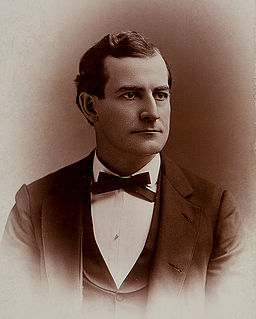
The 1896 United States presidential election in Utah was held on November 3, 1896, and was Utah's first election after statehood at the beginning of the year. Utah voters chose three electors to the Electoral College, who voted for president and vice president.

The 1904 United States presidential election in Florida was held on November 8, 1904. Voter chose five representatives, or electors to the Electoral College, who voted for President and Vice-President.

The 1896 United States presidential election in Idaho took place on November 3, 1896. All contemporary 45 states were part of the 1896 United States presidential election. Idaho voters chose three electors to the Electoral College, which selected the president and vice president.

